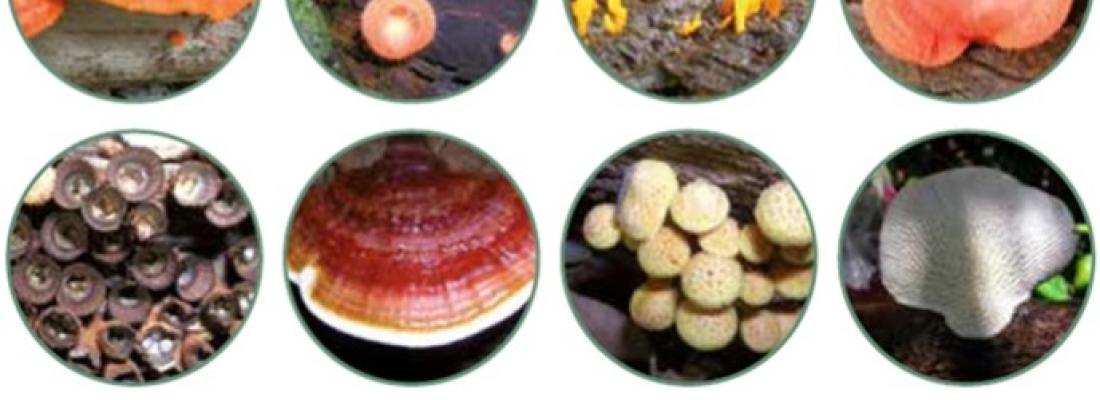Bioeconomy Reading time 5 min
Biofuels and biomaterials: a new enzyme could be a game-changer
Published on 25 May 2018

Fungal biodiversity and lignocellulosic biotechnologies
For more than 30 years, the Joint Research Unit for Biodiversity and Fungal Biotechnologies (BBF) has been exploring the world of filamentous fungi that break down wood, searching for new industrial applications. The unit benefits from a major "library" of fungal strains belonging to the International Microbial Resources Centre, CIRM (see insert). By focusing on a reddish-orange coloured fungus called Pycnoporus coccineus, the hopes of these scientists have now been rewarded. In a recent publication produced in collaboration with CNRS and the University of York (see insert), they revealed their discovery of a novel enzyme belonging to the family of LPMO (lytic polysaccharide mono-oxygenases) that can specifically digest the recalcitrant xylan that naturally coats wood cellulose fibres. Until now, this xylan constituted a mechanical barrier that hampered the action of the enzymatic cocktails used to break down lignocellulosic biomass.
Several patents focused on LPMO enzymes
Despite active research, the yields of the enzymatic cocktails used to convert cellulose into soluble sugars remain problematic, and this constitutes one of the obstacles to the industrial development of cellulosic biofuels because the production costs are too high. After conclusive trials on the fibres of poplar and pine, in 2016 the scientists filed a patent (see insert) which proposed an enzymatic combination that can improve the efficiency of the transformation of cellulose into glucose.
Cellulose nanofibrils and nanocelluloses are widely employed in the paper, pharmaceutical, cosmetics and food industries as dispersing or stabilising additives and in the manufacture of new composite materials that require the delamination of cellulose fibres, which consumes a great deal of energy. The alternatives proposed, such as the action of cellulases or treatment with chemical oxidation, generate either fibres of highly variable quality or severely polluted effluents. Working with their colleagues in the UMR BBF, scientists from the INRA Research Unit on Biopolymers – Interactions and Assemblies (UR BIA) in Nantes showed that LPMO could be exploited to create breaches in the crystalline structure of cellulose fibres, thus facilitating their subsequent fractionation. Two patents filed in 2015 and 2017 (see insert) proposed a new enzymatic process for the defibrillation of cellulose substrates. The work achieved since then has focused more generally on evaluating the action of LPMO enzymes on more complex substrates.
Discussions are currently under way regarding the use of these enzymes for industrial applications, and opportunities for partnerships are now available.
UMR BBF: a major actor in research on LPMO
It is now six years since scientists in the UMR BBF started to look at this new class of enzymes. By experimenting with novel approaches designed to explore the enzymatic diversity of fungi, they have been able to discover the AA14 family (under the CAZy classification: www.cazy.org) that are specifically active on the xylan that coats cellulose fibres in wood. Today, their skills are acknowledged in terms of both their work on genomics, the physicochemical and functional characterisation of enzymes and the production using genetic engineering of strains producing LPMO that can then be tested at a laboratory scale.
Publications
- Villares A, et al., Lytic polysaccharide monooxygenases disrupt the cellulose fibers structure. Sci Rep. 2017 Jan 10 ;7:40262. doi: 10.1038/srep40262
- Couturier M, et al., Lytic xylan oxidases from wood-decay fungi unlock biomass degradation. Nature Chemical Biology 14, 306-310 (2018) doi:10.1038/nchembio.2558
- Procédé pour la fabrication de nanocelluloses à partir d'un substrat cellulosique : FR3037078 étendu par PCT WO2018/50300
- Polysaccharide-oxidizing composition and uses thereof : EP16306162.5 étendu par PCT WO2018/50300
- FR1757422 du 02/08/2017, non encore publié

A Biological Resource Center dedicated to the preservation of filamentous fungi of interest to agro-industries and their utilization
